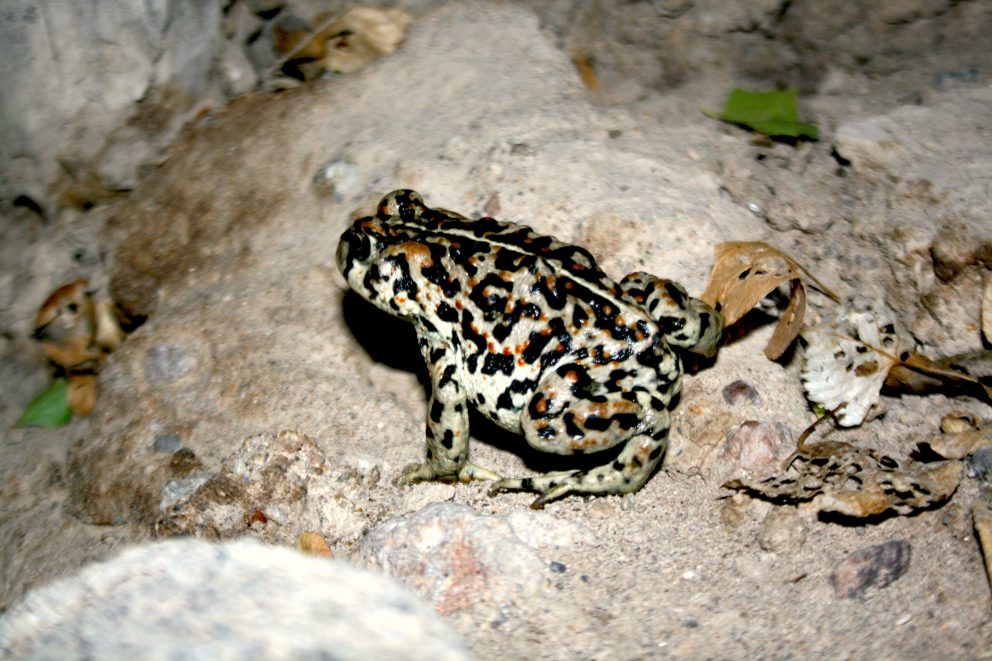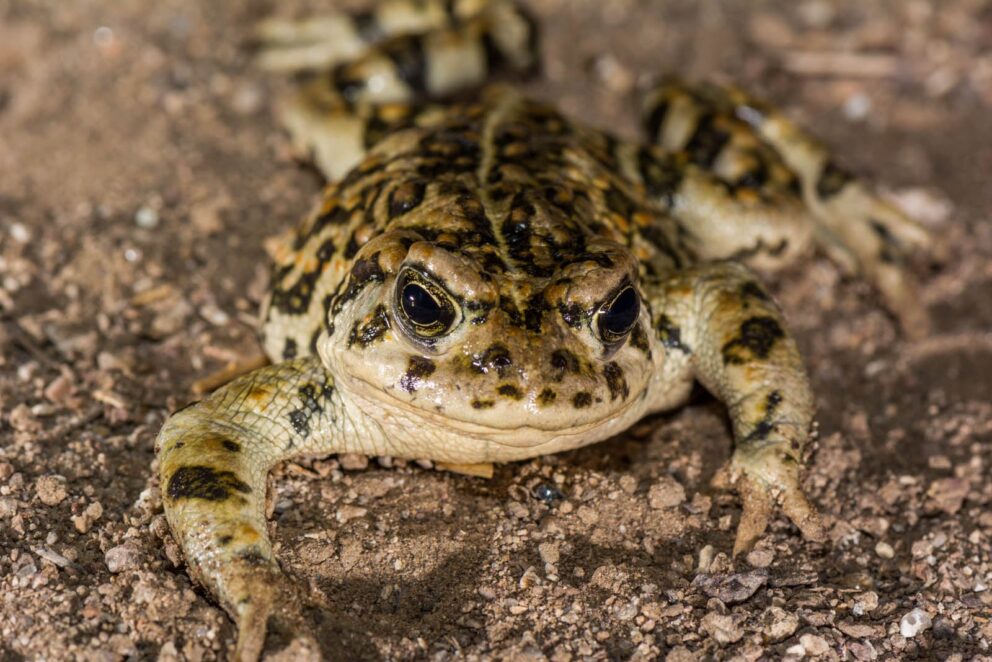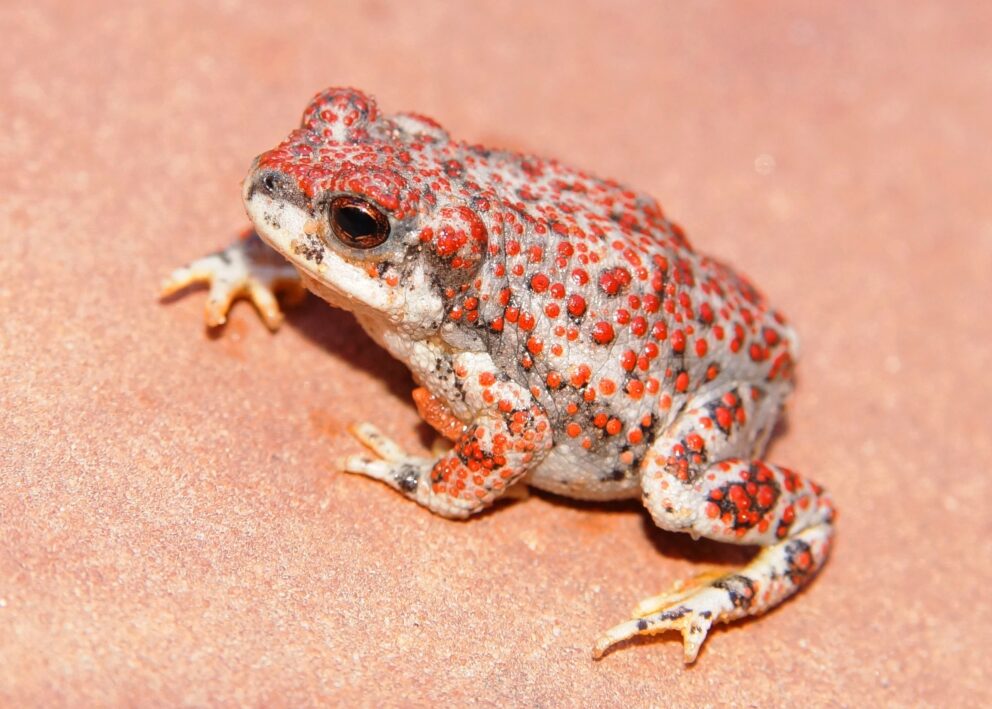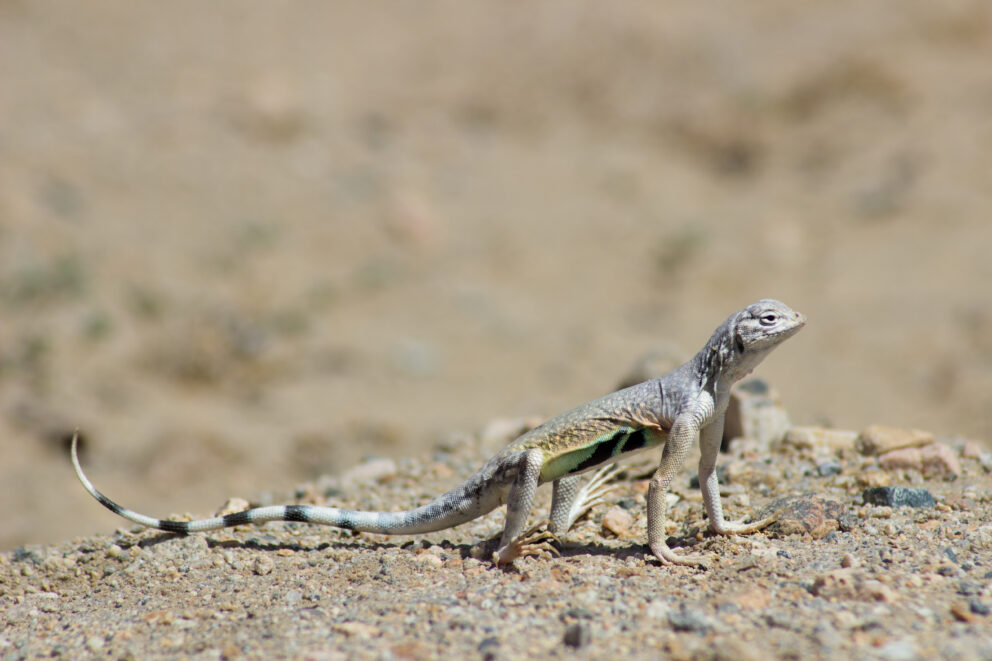- SCIENTIFIC NAME
- Anaxyrus nelsoni
- CLASSIFICATION
- Amphibian
- LIFE SPAN
- 9-12 Years
- STATE CONSERVATION STATUS
-
- Priority Species
- State Protected
- FEDERAL CONSERVATION STATUS
- Not Evaluated
- GAME STATUS
- Non-Game
- Washoe
- Humboldt
- Pershing
- Churchill
- Mineral
- Lyon
- Douglas
- Carson City
- Storey
- Elko
- Lander
- Eureka
- White Pine
- Esmeralda
- Nye
- Lincoln
- Clark
Habitat & Range
The Amargosa Toad is a rare toad only found in the Oasis Valley of the Amargosa River. The Oasis Valley is on the crux of the Great Basin and the Mojave Desert. Amargosa Toads are dependent on water so the Amargosa River and associated springs provide what they need.
- Mojave desert
- Rivers and streams
- Springs and springbrooks
Threats
- Habitat Degradation
- Habitat Loss
- Invasive Species
- Water Diversion
Natural History
Male Amargosa Toads tend to be smaller than females. Females will lay up to 6,000 eggs in long strands. They will typically lay their eggs along the edge of slow streams, among vegetation, and in shallow bodies of water. The eggs will develop and hatch into tadpoles faster in warmer water. The tadpoles need open water for their development.
Adult Amargosa Toads do the majority of their foraging at night. They use their sticky tongues to catch their prey. Their prey includes many different types of invertebrates such as spiders, snails, insects, and even scorpions. During the daytime these toads take shelter from the desert heat in burrows, under dense vegetation, and in piles of debris.
This species is incredibly rare and threatened by several factors. Given that they are a desert dwelling toad, water is a precious and finite resource. Water diversion and the degradation of their wetland habitats threaten the toads as well as several invasive species including bullfrogs and crayfish.
Fun Facts














